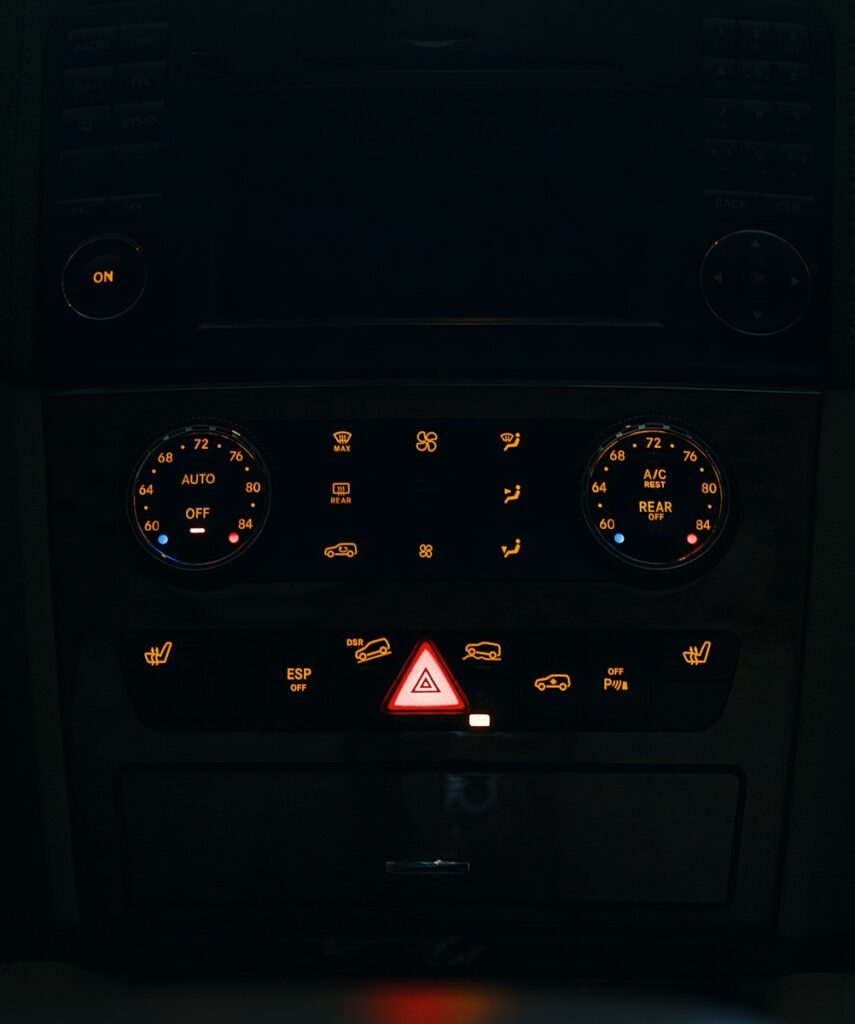
Our vehicles are often seen as resilient machines, built to withstand the rigors of daily commutes, varied weather conditions, and long journeys. They are significant investments, and their proper functioning is crucial for both our convenience and safety. However, beneath this perception of durability lies a reality many drivers overlook: everyday driving habits, often performed without conscious thought, can quietly and systematically wear down critical systems in our cars. These seemingly minor actions can erode performance, drastically shorten the lifespan of components, and ultimately lead to expensive and avoidable repairs.
Understanding these detrimental habits is the first step toward safeguarding your vehicle’s longevity and your financial well-being. From how we interact with the gearshift to the way we approach braking, countless behaviors have a cumulative effect, stressing vital parts of the engine, transmission, brakes, and suspension. Ignoring these subtle signs of wear or continuing practices that accelerate them can transform minor issues into catastrophic failures, leaving you stranded and facing substantial repair bills.
This in-depth guide aims to shed light on some of the most common, yet often unrecognized, driving habits that can harm your car. Drawing on extensive automotive knowledge, we will detail exactly how these behaviors inflict damage and, more importantly, provide clear, actionable advice on how to modify your driving to protect your vehicle. By adopting more mindful driving practices, you can prevent costly repairs, improve safety, and ensure your car remains a reliable mode of transportation for years to come. Let’s delve into the specifics of these hidden dangers.

1. **Resting Your Hand on the Gearshift**: Many drivers, particularly those with manual transmissions, develop the seemingly innocuous habit of resting their hand on the gear lever even when not actively changing gears. While this might feel comfortable or natural, it introduces a subtle but constant pressure on the internal transmission components. The gearshift mechanism is engineered for momentary use, designed to be engaged briefly for shifting and then released, not to serve as a perpetual handrest.
This continuous, unnecessary force can cause critical parts within the transmission to wear out at an accelerated rate. Over time, the cumulative stress can lead to significant mechanical issues, potentially resulting in costly repairs that could have been entirely avoided. In extreme cases, this seemingly minor habit can even contribute to complete transmission failure, one of the most expensive repairs any car owner can face.
To protect this vital system, the solution is straightforward: keep both hands on the steering wheel when you are not actively shifting gears. This simple adjustment ensures that the transmission components are only subjected to pressure when they are designed to handle it, preserving their integrity and extending the lifespan of one of your car’s most complex and expensive assemblies. A small change in behavior can offer substantial protection for a significant part of your vehicle.

2. **Riding the Clutch**: Another prevalent habit among manual transmission drivers is “riding the clutch,” which involves keeping a foot resting lightly on the clutch pedal even when not in the process of changing gears. This seemingly minor contact often goes unnoticed by the driver but has a profound impact on the clutch system. Even slight pressure causes the clutch to partially engage, initiating a subtle yet continuous friction between the clutch disc and the flywheel.
This constant friction generates heat and leads to premature wear on the clutch disc, a component designed for a finite number of engagements. The clutch assembly is built to operate under specific conditions, and continuous partial engagement drastically shortens its operational life. Clutch replacements are not inexpensive, often requiring significant labor due to the transmission’s removal.
To avoid this costly mistake, it is imperative to only press the clutch pedal when it is necessary for shifting gears. When not shifting, ensure your foot is completely off the pedal and resting on the floor or the dedicated footrest, if your vehicle is equipped with one. For situations like hill-starts, use the handbrake to hold the car in neutral until you are ready to engage the gear and move, rather than hovering over the clutch. Adopting this practice will significantly extend the life of your clutch and prevent expensive, avoidable repairs.

3. **Driving Aggressively with a Cold Engine**: Starting your car and immediately driving off aggressively or revving the engine, especially in colder weather, is a habit that can quietly inflict significant damage on internal engine parts. When an engine is cold, the motor oil is thicker and does not circulate as effectively throughout the engine’s intricate network of moving components. This diminished lubrication means that these parts experience increased friction upon startup, leading to accelerated wear.
Allowing your engine a brief period to warm up, typically 30 seconds to a minute, gives the oil sufficient time to circulate fully and reach optimal operating temperature. During this initial warm-up phase, the oil thins slightly and can properly lubricate all moving parts, reducing metal-to-metal contact and preventing premature wear. Revving a cold engine, whether in park, neutral, or during aggressive driving, sends sudden bursts of power through inadequately lubricated parts, creating unnecessary stress.
Even gentle driving during the first few miles after a cold start can significantly reduce the stress on the engine’s system. While most modern engines do not require an extensive warm-up period, adopting this simple habit is a proactive way to protect your engine’s longevity and ensure it runs smoothly and efficiently for years to come. It’s a small investment of time that yields considerable returns in engine health.

4. **Ignoring Dashboard Warning Lights**: Many drivers view the illuminated symbols on their dashboard with a mix of confusion and apprehension, sometimes even choosing to ignore them in hopes they will simply disappear. However, dashboard warning lights are far from decorative; they are critical alerts from your vehicle’s sophisticated onboard systems, designed to signal potential problems that require immediate attention. Ignoring these warnings can lead to major mechanical issues down the road, transforming minor, easily fixable problems into significantly more costly and complex repairs.
For instance, a seemingly benign “check engine” light could indicate anything from a loose gas cap, which is a simple fix, to a severe engine issue that, if left unaddressed, could lead to catastrophic failure. An oil pressure warning, a battery light, or a brake system alert each points to a specific system needing diagnosis. Continuing to drive with these lights active can exacerbate the underlying problem, causing further damage and potentially compromising your safety.
It is always best practice to act quickly when a warning light illuminates. Consult your vehicle’s owner’s manual for guidance on what the specific light indicates, or better yet, seek the advice of a professional mechanic. Addressing issues promptly, as soon as a light appears, can prevent minor problems from escalating into expensive repairs and ensures that your vehicle remains in safe, reliable operating condition. Do not wait until it is too late to acknowledge these vital signals from your car.

5. **Neglecting the Parking Brake**: The parking brake, often mistakenly referred to as the “emergency brake,” is a crucial component of your vehicle’s safety and mechanical well-being, yet many drivers neglect to use it, especially on flat surfaces. The common assumption is that it’s unnecessary unless parking on an incline, and that relying solely n the transmission (or “park” in automatic vehicles) is sufficient. However, this habit can lead to significant long-term damage, particularly for automatic transmissions.
When the parking brake is not engaged, the entire weight of the vehicle rests on the transmission’s parking pawl, a small metal pin designed to lock the transmission in place. Over time, this constant strain can cause premature wear on the transmission components. The parking brake, by contrast, is specifically designed to take the load off your transmission and securely hold the vehicle in place, providing an independent and robust braking mechanism that prevents mechanical strain.
Making it a routine habit to always engage your parking brake, regardless of whether you are parked on a steep hill or a perfectly flat surface, serves multiple purposes. It prevents undue stress on your transmission, significantly extending its life, and adds an invaluable extra layer of safety, ensuring your vehicle remains securely stationary. This simple, consistent action is an effective preventative measure against potentially costly transmission repairs and a practice that reinforces overall vehicle security.

6. **Using the Wrong Motor Oil**: The choice of motor oil for your vehicle is far from arbitrary; it is a critical factor influencing engine performance, protection, and longevity. Using an incorrect type or grade of motor oil, even if it seems like a minor deviation, can have detrimental effects on your engine’s intricate internal mechanisms. Modern engines are meticulously engineered with specific lubrication requirements, and their proper functioning relies on oil that meets precise viscosity, additive, and performance specifications.
Motor oil serves multiple vital functions: it lubricates moving parts to reduce friction and wear, helps cool the engine by dissipating heat, cleans engine components by suspending contaminants, and protects against corrosion. If the wrong oil is used, it may not adequately perform these functions. For instance, oil with an incorrect viscosity might be too thick when cold, impeding proper circulation and causing increased friction during startup, or too thin when hot, leading to insufficient lubrication and metal-to-metal contact.
Beyond immediate lubrication issues, using the wrong oil can lead to the formation of sludge and varnish deposits within the engine. These deposits can clog oil passages, restrict oil flow, and further diminish the oil’s ability to lubricate and cool effectively. This can culminate in reduced fuel efficiency, decreased engine performance, and, in severe cases, significant internal engine damage that necessitates expensive repairs or even engine replacement.
To ensure optimal engine health and performance, it is imperative to always consult your vehicle’s owner’s manual to determine the manufacturer’s recommended oil type, grade, and specifications. If you are unsure, seeking advice from a professional mechanic is a wise choice. Adhering strictly to these recommendations guarantees that your engine receives the precise lubrication and protection it needs, ensuring it runs smoothly and reliably for its intended lifespan.
Embracing mindful driving practices—such as maintaining proper fuel levels, allowing your engine to warm gently, utilizing engine braking, and adhering to scheduled maintenance—is more than just about avoiding immediate breakdowns. It’s about cultivating a preventative approach to vehicle ownership. These adjustments are not only financially beneficial, saving you thousands in potential repairs, but they also contribute to a safer, more reliable, and more enjoyable driving experience. Your car is a substantial investment; by treating it with consistent care and attention to these crucial habits, you ensure it continues to serve you faithfully on every journey.”



